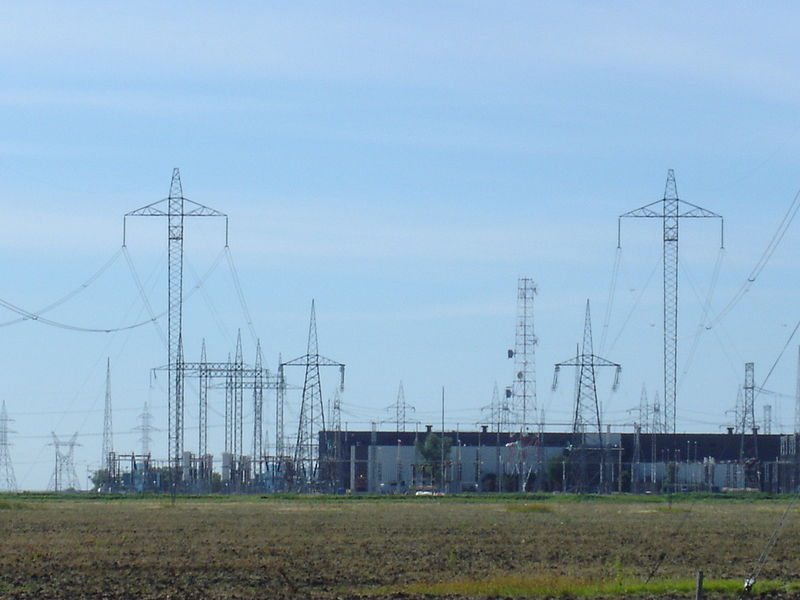By Francis Menton
Here in New York, we proceed giddily along shutting down our functioning and reliable mostly-fossil-fuel based electricity-generating system, in anticipation of an imminent future of clean and free “renewables.” After all, our Climate Act (officially, the “Climate Leadership and Community Protection Act of 2019”) has decreed that we must do so. A Climate Action Council — created by the statute and packed with politically-appointed climate activists with next-to-no expertise in how the energy system works — cooks up “Scoping Plans” that direct the little people to go out and create an entirely new energy system on a politically-determined timetable.
And almost nobody so much as raises any questions as to whether this can possibly work. Among the tiny handful of doubters we have myself, but more importantly a much more indefatigable guy named Roger Caiazza. Caiazza has a website called Pragmatic Environmentalist of New York. Recently he has been on fire over there, cranking out one post after another about the absurdities being put forth and imposed on our state by the climate cultists: a post on July 9 about New York’s “cap and invest” strategy (a scheme to charge utilities — and thus ratepayers — for use of natural gas, as a way to raise money to further subsidize wind and solar projects); a post on July 7 about the suddenly-soaring costs of building our first off-shore wind projects; a post on July 5 summarizing a recent speech by a guy named Richard Ellenbogen listing obstacles to New York’s climate ambitions that the bureaucratic geniuses can’t seem to grasp; a post on July 2 describing some lessons New York should be learning from the experience of the Regional Greenhouse Gas Initiative of the Northeastern states; a post on July 1 about the experience of Washington State, where a “cap and invest” strategy similar to what New York is about to try has quickly led to highest-in-the-nation gasoline prices; and more.
Way back on June 24, Caiazza had a post on the subject of a letter submitted to the Albany Times-Union newspaper. The letter in question features what Caiazza describes as “issues raised by the New York Independent System Operator (NYISO) Power Trends report.” The ISO is the organization of people charged with maintaining a wholesale electricity market to balance supply and demand for electricity throughout the state on a minute-by-minute basis. I can find a lot to criticize about the ISO — for example, they are a not-for-profit with no “skin in the game” if things go wrong, and the market structures they have set up are badly flawed in my view. But in their favor, they do have people who actually know how the electricity grid works, and who are aware of the challenges of adding large amounts of intermittent renewables to the mix.
The ISO’s Power Trends Report can be found here. It bears the date of “2023,” without giving an exact date of issuance. The Report was also accompanied by a one page “Fact Sheet.”
Given the political environment in which the ISO is operating — dominated by climate activists and brooking no dissent from official orthodoxy — the Report and Fact Sheet contain some truly remarkable statements. Here are some of the highlights:
-
From the Report, pages 5 – 6: “In the New York City metropolitan area, data shows a continued rise in economic activity coming out of the pandemic. Across upstate New York, energy intensive microchip manufacturing facilities are developing in several locations. Together, these elements are increasing demand for electricity. However, pursuant to public policies, fossil fuel generation is retiring faster than renewable resources are entering service, leading to declining reliability margins across the state, but most acutely in the New York City area.” Bold in original.
-
From the Report, page 7: “Electric supply from solar and wind resources is intermittent because those resources are dependent upon weather conditions and are unable to increase output to respond to changing system conditions. Energy Storage Resources (ESRs) offer great promise, but the amount of energy they can contribute to the grid, and the length of time they can perform, is limited today. By 2040, to achieve the mandates of the CLCPA, new emission-free generating technologies with the necessary reliability service attributes will be needed to replace the flexible, dispatchable capabilities of fossil fuel generation, and sustain production for extended periods of time. Such emission-free technologies, either individually or in aggregate, are not yet available on a commercial scale.” This time I added the bold.
-
From the Fact Sheet: “To achieve the mandates of the CLCPA, new emission-free supply with the necessary reliability services will be needed to replace the capabilities of today’s generation. Such new supply is not yet available on a commercial scale.” Bold in the original.
These statements are somewhat buried amid other text that parrots loyalty to the goals of the Climate Act and the alleged need to reduce emissions. However, it is fair to say that the ISO is issuing a rather clear warning that the technology does not currently exist to accomplish the utopian schemes that the politicians have laid out. Clearly, they are positioning themselves to point fingers and say “I told you so” when the whole thing doesn’t work.
It may be too much to call this “courage,” but at least our ISO is not brazenly lying like most of the other actors in this arena at the moment.
Francis Menton runs the Manhattan Contrarian blog from the West Village neighborhood in Manhattan.
This article was originally posted at the Manhattan Contrarian and is republished with permission.
For more on electric power reliability, click here.
